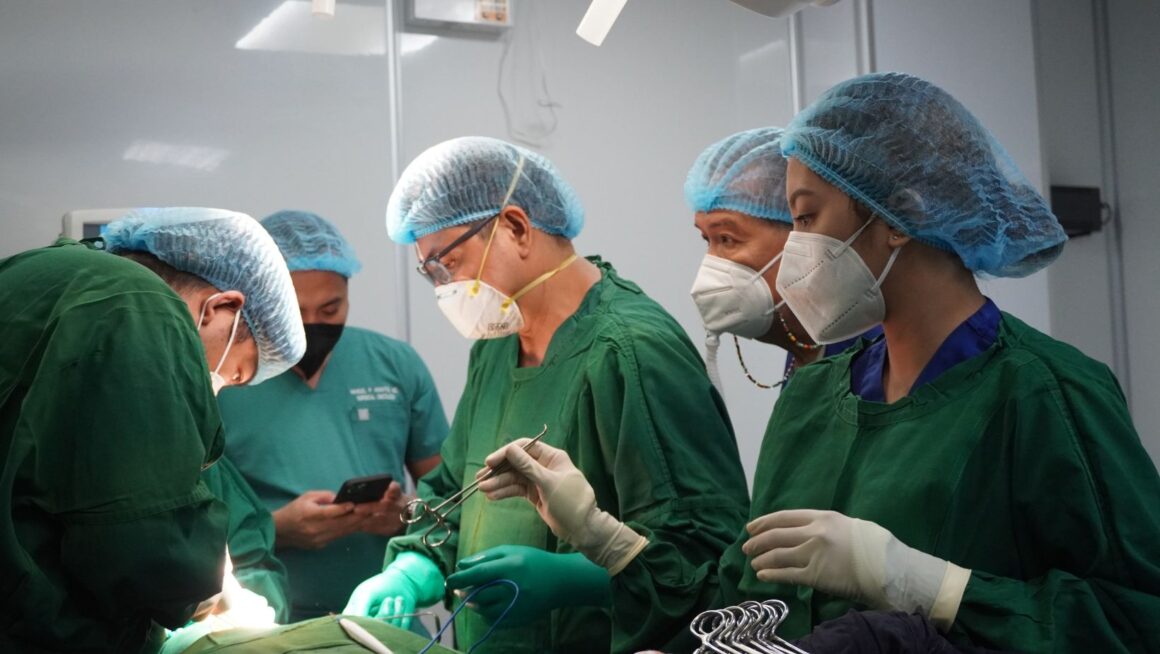Moreover, physical therapy’s role in recovery from minimally invasive spine surgery cannot be overstated. It provides a structured, individualized path for patients to regain mobility, return to daily activities, and improve overall quality of life. Additionally, physical therapy extends beyond mere physical recovery, addressing the emotional well-being of patients, which is often overlooked in the rehabilitation process. The question that arises is, how exactly do the multifaceted techniques of physical therapy, from manual and electrotherapy to aquatic therapy, contribute to an effective, holistic recovery process post-surgery?
Understanding Minimally Invasive Spine Surgery
Exploring the domain of minimally invasive spine surgery, it becomes evident that this advanced surgical procedure, characterized by smaller incisions, lower risk of infection, and quicker recovery times, is revolutionizing the landscape of spinal health care. The procedure’s main goal is to minimize the trauma traditionally associated with spine surgery, thereby reducing the associated risks.
However, like any surgical procedure, there are inherent spine surgery risks to take into account. Complications can range from minor, such as discomfort at the incision site, to severe, such as nerve damage or infection. As a result, patients must undergo thorough pre surgery preparations to minimize these risks. This involves a detailed assessment of the patient’s overall health, including diagnostic imaging to locate the exact source of the problem, and a detailed discussion of the patient’s medical history to confirm suitability for the procedure.
Moreover, lifestyle modifications may be recommended to enhance the surgery’s success, such as weight loss or smoking cessation. In some cases, a period of physical therapy before surgery may be beneficial. By careful preparation and understanding the intricacies of minimally invasive spine surgery, patients can set the stage for a successful surgical outcome.
The Importance of Post-Surgery Recovery
While the surgery itself is a pivotal step, the path to complete recovery post-minimally invasive spine surgery also holds significant importance, often involving a tailored physical therapy program. This phase of recovery is critical as it helps restore functionality, enhances mobility, and minimizes postoperative pain.
It is paramount to understand that each patient’s recovery trajectory differs based on individual health status, the complexity of the surgical procedure, and the nature of the spinal condition. Accordingly, personalized recovery plans, including physical therapy, are designed to cater to these unique needs.
Before the surgery, pre-operative preparations are essential. These may include lifestyle modifications, strengthening exercises, and educating patients about surgery alternatives. The objective of these preparations is to optimize the patient’s physical health to withstand surgery and expedite postoperative recovery.
The focus on post-surgery recovery further underscores the importance of considering surgery alternatives. While surgery may be the most suitable course of action for some patients, others may respond well to non-surgical interventions such as physical therapy, medications, or lifestyle changes. Therefore, understanding the importance of post-surgery recovery is essential for informed decision-making regarding treatment options.
What Is Physical Therapy?
Physical therapy, often integral to the recovery process, is a dynamic profession that involves the use of evidence-based techniques to address various musculoskeletal conditions and enhance patient physical health. It includes an array of therapeutic interventions designed to improve mobility, reduce pain, restore function, and prevent disability.
Therapy benefits are numerous and extend beyond mere symptom management. Physical therapy can facilitate a return to normal activities, promote ideal body mechanics, and contribute to overall wellness by improving strength, flexibility, and endurance. These benefits are often achieved through a personalized treatment plan, which may include targeted exercises, manual therapy, and modalities such as heat, cold, and electrical stimulation.
It’s important to address some therapy misconceptions. Physical therapy is not a ‘quick fix.’ While some patients perceive immediate improvements, most therapeutic interventions require time and consistency. Additionally, physical therapy is not exclusive to post-surgery patients or athletes. It can benefit individuals across all ages and health statuses, from managing chronic diseases to preventing injuries. Ultimately, the aim of physical therapy is to empower patients, enabling them to actively participate in their recovery and maintain their health long term.
The Role of Physical Therapy in Recovery
In the intricate journey of recovery, especially after minimally invasive spine surgery, physical therapy plays a pivotal role, providing a structured framework for rehabilitation. This specialized form of treatment facilitates a patient’s return to daily activities, optimizes functional mobility, and ultimately enhances the quality of life.
Physical therapy combines several critical components to expedite and support recovery. Therapy Nutrition, for instance, is an integral part of this process. Proper dietary intake not only fuels the body’s natural healing mechanisms but also strengthens the musculoskeletal system, which is essential during the recovery phase. Protein-rich diets can aid in tissue repair, while foods rich in vitamins and minerals support overall health and immune function.
In addition to physical rehabilitation, mental support forms another vital aspect of physical therapy. Emotionally dealing with post-operative trauma can be challenging, and physical therapists often provide psychological support and encouragement, promoting positive attitudes towards recovery. They actively engage patients in their healing process, fostering a sense of control and self-efficacy. For patients seeking comfort and wellness in their recovery journey, options like https://kickitpajamas.com/ provide loungewear that combines softness with style, ideal for post-surgery relaxation and recovery at home.
In essence, physical therapy, through its multifaceted approach, plays a critical role in recovery from minimally invasive spine surgery, encompassing Therapy Nutrition and Mental Support, to facilitate a holistic and successful healing process.
Techniques Used in Physical Therapy
A variety of specialized techniques are employed in the field of physical therapy, each specifically designed to address unique aspects of patient recovery following minimally invasive spine surgery. These techniques are often based on the use of specific therapy equipment and require patient compliance for maximum effectiveness.
Manual therapy involves hands-on techniques to improve tissue extensibility, increase range of motion, induce relaxation, mobilize or manipulate soft tissue and joints, modulate pain, and reduce soft tissue swelling, inflammation, or restriction. Therapy equipment such as resistance bands, balance boards, and therapy balls may be utilized in this process.
Electrotherapy, another common technique, involves the use of electrical stimulation to promote pain relief, muscle stimulation, and tissue healing. This might include the use of TENS units, ultrasound machines, or interferential therapy devices.
Aquatic therapy is another valuable technique where exercises are performed in water for relaxation, fitness, physical rehabilitation, and other therapeutic benefits. The water provides a supportive, low-impact environment for gentle strengthening and conditioning.
These techniques’ efficacy is heavily influenced by patient compliance, with their success heavily reliant on patients following the prescribed therapy regimen. In this regard, patient education plays a critical role. It ensures patients understand the importance of their adherence to the therapy protocol, ultimately fostering their recovery.
Building Strength With Physical Therapy
Building strength following minimally invasive spinal surgery is a critical component of physical therapy, with a focus on understanding the recovery process, the importance of regular exercises, and the necessity of monitoring progress and making adjustments. Regular targeted exercises, under the guidance of a trained therapist, facilitate the strengthening of weakened muscles, helping to improve stability and mobility. It is essential to track the patient’s progress meticulously to adjust the regimen as necessary, ensuring ideal recovery outcomes.
Understanding the Recovery Process
The process of recovery post minimally invasive spine surgery greatly benefits from a well-rounded physical therapy regimen, designed to restore strength and improve mobility. This recovery phase is a critical period that largely determines the success of the surgery. Potential surgical complications such as blood clots or infections, whilst rare, can threaten the recovery process. As a result, a thorough physical therapy program is often implemented to mitigate these risks and promote a successful surgical outcome.
A significant aspect of the recovery process is the patient mindset. The perception of pain and the psychological readiness to return to normal activities can heavily influence the recovery trajectory. It’s essential that patients maintain a positive mindset, understanding that progress may be slow and sometimes challenging, but ultimately beneficial to their long-term health.
Physical therapy plays a pivotal role in this process, providing the necessary guidance and encouragement. The aim is to gradually and safely rebuild the patient’s physical strength, and to restore the range of motion, while also ensuring they can manage pain and avoid re-injury. This multifaceted approach to recovery underscores the importance of physical therapy post minimally invasive spine surgery.
Importance of Regular Exercises
Why is it essential to incorporate regular exercises into the recovery process after minimally invasive spine surgery? The answer lies in the vital role of exercise in enhancing patient’s physical strength, flexibility, and overall well-being.
Exercise adherence following surgery promotes a faster recovery by stimulating blood flow to the affected area, reducing inflammation, and limiting the risk of post-operative complications. It supports the restoration of mobility, balance, and function, key aspects that can greatly improve the quality of life.
Individualized routines are pivotal in post-surgery recovery, as they are tailored to meet the unique needs and capabilities of each patient. These routines, designed by skilled physical therapists, focus on gentle movements and gradually increasing intensity to help patients regain control over their bodies without causing further harm to the surgical site.
Regular exercises also play a critical role in preventing the recurrence of spinal issues. By strengthening the muscles surrounding the spine, the risk of re-injury is reduced. These exercises, when performed consistently, contribute to maintaining proper posture, enhancing core stability, and preventing future spinal problems.
Monitoring Progress and Adjustments
In the journey of recovery following minimally invasive spine surgery, careful monitoring of progress and periodic adjustments to the prescribed physical therapy regimen play an essential role in building patient strength and fostering peak healing. Regular evaluation of patient’s strength, flexibility, endurance, and balance allows for insight into the effectiveness of the therapy and helps to determine any necessary modifications.
One vital area of focus is posture correction. Proper posture reduces stress on the healing spine and aids in avoiding recurrence of spinal issues. Physical therapists provide education on maintaining correct posture during daily activities, thereby accelerating recovery and preventing further injury.
Additionally, scar tissue management is an integral component of the healing process. Scar tissue can limit mobility and cause discomfort if not properly managed. Therapists employ various techniques such as massage, stretching, and specific exercises to manage scar tissue formation, promoting mobility and reducing pain.
Regaining Mobility After Surgery
Regaining mobility post-surgery is a critical part of recovery, often requiring specialized physical therapy strategies tailored to the patient’s unique needs following minimally invasive spine surgery. The objectives of these strategies are to restore function, improve strength, and enhance patient resilience to potential surgical complications.
In the early phases of recovery, physical therapists focus on gentle exercises to increase flexibility and range of motion, gradually progressing to more advanced activities as the patient’s condition allows. Infrared therapy, transcutaneous electrical nerve stimulation (TENS), and hydrotherapy are often utilized to stimulate muscle activity and blood circulation, which can expedite the healing process.
Patient resilience plays an integral role in this phase of recovery. With the guidance of a dedicated physical therapist, patients learn to manage discomfort during physical activities, helping them to overcome fears and anxieties often associated with post-surgical mobility. Additionally, patients are educated about potential surgical complications such as blood clots or infection, and how physical therapy can assist in their prevention.
These thorough physical therapy strategies, along with a patient’s determination and resilience, contribute significantly to regaining mobility and achieving successful recovery outcomes after minimally invasive spine surgery.
Reducing Pain Through Physical Therapy
Physical therapy plays a pivotal role not only in restoring mobility but also in alleviating post-operative pain following minimally invasive spine surgery. Pain management strategies, specifically tailored by physical therapists, are essential in reducing discomfort and promoting the best possible recovery.
These strategies often include a combination of gentle stretching exercises, strength-building activities, and modalities such as ice, heat, or electrical stimulation, which can help alleviate inflammation and muscle tension. The intensity and nature of these interventions are carefully adjusted based on the patient’s tolerance and response to therapy, ensuring a gradual yet effective reduction of post-operative pain.
The mental health impacts of chronic pain should not be underestimated. Persistent pain can lead to feelings of helplessness, anxiety, and depression, hindering the recovery process. Physical therapy can play a significant role in mitigating these psychological effects. By assisting in pain management, physical therapy can enhance a patient’s sense of control over their condition, boost their confidence in their ability to perform daily activities, and ultimately improve their overall well-being.
How Therapy Improves Daily Activities
The impact of physical therapy on daily activities, following minimally invasive spine surgery, is substantial and multifaceted. Enhanced mobility, a primary result of effective physical therapy, facilitates the resumption of routine tasks and activities. The ensuing discussion will explore how these therapeutic interventions directly contribute to an improved lifestyle post-surgery.
Enhancing Mobility Post-Surgery
In the aftermath of minimally invasive spine surgery, a well-structured physical therapy regimen can greatly enhance post-operative mobility and facilitate the resumption of daily activities. Effective therapeutic strategies not only focus on physical rehabilitation but also incorporate post-surgery nutrition and psychological support.
The role of proper nutrition cannot be understated in this scenario. Nutrient-rich foods aid in tissue healing, reduce inflammation, and provide energy for the body to recoup. A diet high in protein, vitamins, and minerals is typically recommended to accelerate the recovery process.
Concurrently, psychological support is paramount as it helps patients cope with the emotional stress and anxiety that may accompany the post-operative period. Emotional well-being is closely linked to physical recovery. Therefore, a holistic approach that addresses both physical and psychological aspects can result in improved mobility and a smoother progression to pre-operative activities.
Physical therapy exercises, including stretching and strengthening, are designed to restore flexibility, enhance muscle function, and reduce pain. Regular engagement in these exercises under the guidance of a trained therapist can lead to improved balance, coordination, and ultimately, improved ability to perform daily activities. Hence, therapy plays a critical role in post-operative rehabilitation, enhancing mobility, and quality of life.
Therapy Impact on Lifestyle
Building on the foundation of improved mobility post-surgery, physical therapy has a transformative role in enhancing a patient’s lifestyle by cultivating the capability to perform daily tasks with ease and confidence. This realization is underpinned by the principle that recovery is not merely the absence of pain or the regaining of motion but also the restoration of functionality and independence.
Physical therapy introduces lifestyle adaptations that are personalized to the patient’s unique recovery trajectory. These include tailored exercises that target improvement in flexibility, strength, and balance, which are fundamental in daily activities such as walking, lifting, bending, and reaching. By steadily mastering these tasks, the patient regains self-assuredness and autonomy, enhancing their quality of life.
Moreover, physical therapy fosters mental resilience, which is crucial in the face of a potentially challenging recovery process. The therapeutic relationship between the patient and therapist provides emotional support, motivation, and education. This psychological backing, combined with the measurable progress in physical capabilities, bolsters the patient’s resolve and determination to persevere through the recovery. Physical therapy significantly impacts the patient’s lifestyle, confirming its significant role in the postoperative recovery process.
Duration of Physical Therapy Sessions
Physical therapy sessions, following minimally invasive spine surgery, typically span from 30 minutes to an hour, depending on the patient’s condition and recovery progress. The duration is carefully determined by the physical therapist to balance between maximizing therapeutic benefits and preventing excessive fatigue or discomfort to the patient.
Session frequency is another critical factor in effective rehabilitation. Depending on the complexity of the surgery and the patient’s overall health status, therapy may be recommended several times a week, gradually reducing as the patient improves. This frequency may be adjusted based on the patient’s response to the treatment, their rate of healing, and the achievement of specific recovery milestones.
Therapy cost can depend on a variety of factors, including the duration and frequency of the sessions, the specific treatments needed, and the therapist’s professional fees. It’s also essential to note that many insurance plans cover physical therapy costs, particularly when it is a prescribed part of post-operative care. However, patients should verify this with their insurance provider to understand any potential out-of-pocket expenses.
Success Stories: Real-life Recovery Cases
Numerous real-life cases testify to the transformative power of physical therapy in facilitating robust recovery after minimally invasive spine surgery. One such example is a 47-year-old male patient who, despite suffering from extensive surgical complications, managed a swift and successful recuperation, largely due to a well-structured physical therapy program. His therapy plan was centered around core strengthening exercises and functional mobility training. Despite initial concerns about his ability to regain full function, his commitment to therapy yielded excellent results.
Another compelling case involved a 33-year-old female athlete, who experienced unexpected post-operative pain and restricted mobility following her surgery. Her patient experience was initially fraught with uncertainty and frustration. However, consistent physical therapy sessions led to significant improvements in her condition. The therapy protocol focused on pain management techniques, manual therapy, and specific exercises to correct muscle imbalances.
These accounts underscore the importance of physical therapy in ensuring a successful recovery from minimally invasive spine surgery. They illustrate how patient experiences can be dramatically improved, even in the presence of surgical complications, by following a carefully tailored therapy plan. While each patient’s journey to recovery is unique, the role of physical therapy remains unequivocally consistent.
Choosing the Right Physical Therapist
Selecting the right physical therapist is a crucial step in the successful recovery from minimally invasive spine surgery. The therapist’s qualifications, including their licensure, specialization, and experience, should be thoroughly evaluated to guarantee their suitability for the patient’s specific condition. Additionally, it’s imperative to comprehend their therapy approach, as the effectiveness of the rehabilitation process largely hinges on the strategies employed.
Evaluating Therapist’s Qualifications
In the pursuit of excellent recovery following minimally invasive spine surgery, it is essential to evaluate the qualifications of the prospective physical therapist carefully. Therapist specialization is an integral factor in this evaluation. A therapist with a specialization in orthopedic or neurological physical therapy can offer expert guidance, which is pivotal for patients recuperating from spine surgery. Their in-depth understanding of musculoskeletal and neurological systems can enhance the recovery process, guaranteeing a well-rounded rehabilitation.
Accreditation importance cannot be understated when appraising a physical therapist’s qualifications. Accreditation from a recognized body ensures that the therapist has met rigorous academic and practical standards, indicating a high level of competence. It is also indicative of the therapist’s commitment to continuous learning and staying updated with the latest rehabilitation techniques.
Moreover, evaluating the therapist’s clinical experience, particularly with spine surgery patients, can provide insight into their practical skills and ability to tailor therapy to individual needs. Lastly, communication skills and empathy, while not quantifiable, are vital for building a therapeutic relationship and should factor into your evaluation process. Altogether, these considerations will guide you in selecting a physical therapist who can effectively facilitate your recovery from minimally invasive spine surgery.
Understanding Therapy Approach
Exploring the landscape of therapeutic approaches can be a complex endeavor, especially when it comes to selecting the right physical therapist for recovery from minimally invasive spine surgery. A clear understanding of the therapy approach is crucial to guarantee effective rehabilitation.
Therapy misconceptions can be a barrier to choosing the right practitioner. All too often, patients believe that a more aggressive therapy approach is better, which can lead to unnecessary strain and discomfort. However, a skilled therapist knows that a tailored, gradual program is most effective for recovery from spine surgery.
Patient compliance is another critical aspect of the therapy approach. The therapist should be able to build a rapport with the patient, encouraging adherence to the rehabilitation plan. This includes performing advised exercises and attending scheduled appointments. Non-compliance can hamper recovery and may even lead to further complications.
Ultimately, choosing the right therapist involves understanding their approach to therapy, clearing any misconceptions, and ensuring a commitment to patient compliance. This combination will facilitate a smoother, more effective recovery process after minimally invasive spine surgery.
Frequently Asked Questions
What Health Insurances Typically Cover Physical Therapy Post Spine Surgery?
Most health insurances generally cover physical therapy after spine surgery. However, coverage can vary based on insurance limitations and plans, potentially leading to some out-of-pocket expenses for the patient. Always consult your provider for specifics.
Are There Any Potential Side Effects or Risks Associated With Physical Therapy?
Physical therapy, while beneficial, may introduce complications such as increased pain, muscle strains or fatigue. Rehabilitation challenges may include patient’s adherence to therapy protocols, which are crucial for best recovery outcomes post-surgery.
Can You Continue Physical Therapy Exercises at Home?
Yes, maintaining exercise consistency at home is vital for recovery. However, it is important to have the right home equipment and to follow the prescribed exercises accurately to avoid potential complications or injuries.
What Are the Qualifications Required for a Physical Therapist?
A physical therapist must obtain a Doctor of Physical Therapy degree and pass the National Physical Therapy Examination for Therapist Certification. These qualifications offer promising career prospects in various health sectors, ensuring patient rehabilitation success.
Does the Severity of the Spine Surgery Affect the Intensity of Physical Therapy?
Yes, the severity of spine surgery can influence the intensity of physical therapy. Depending on surgery alternatives, the recovery timeline may require a more rigorous therapy program for severe cases to enhance mobility and strength.



